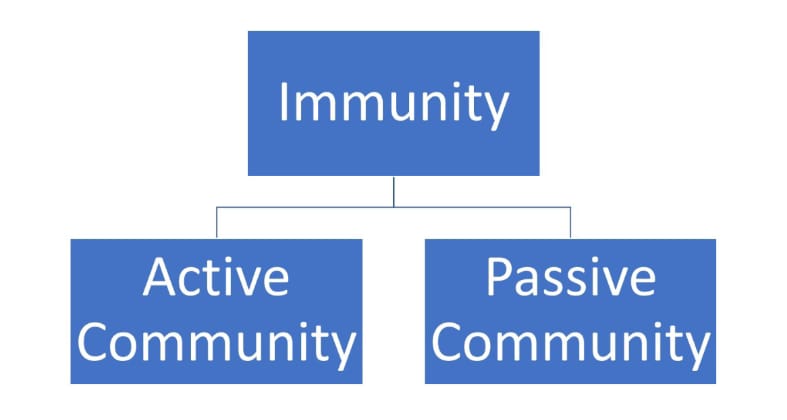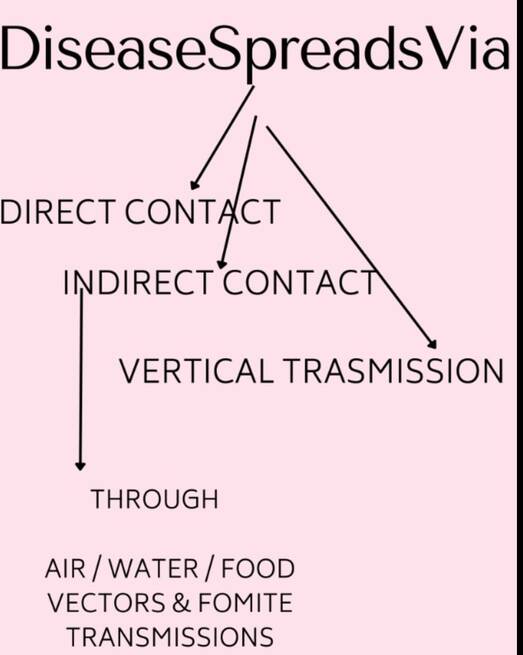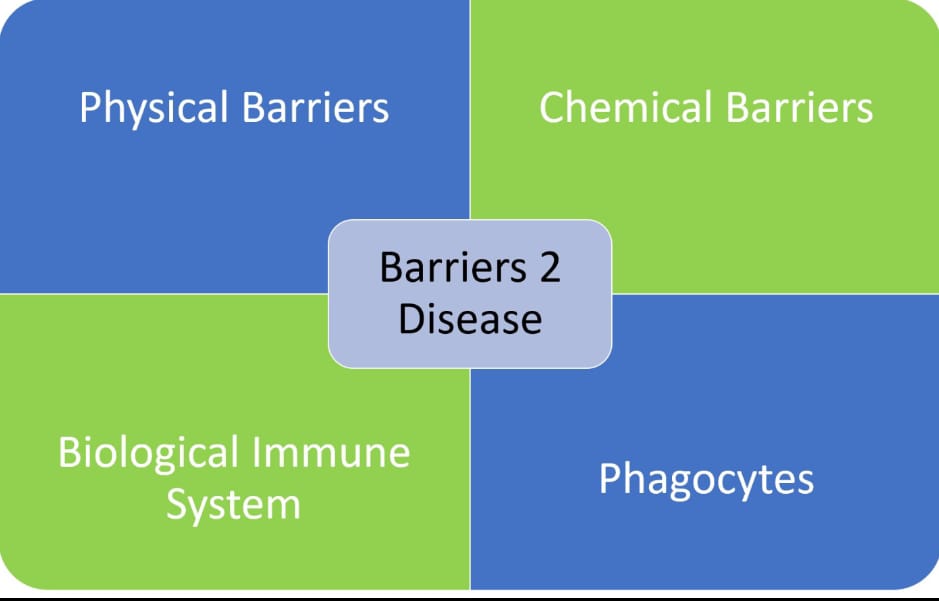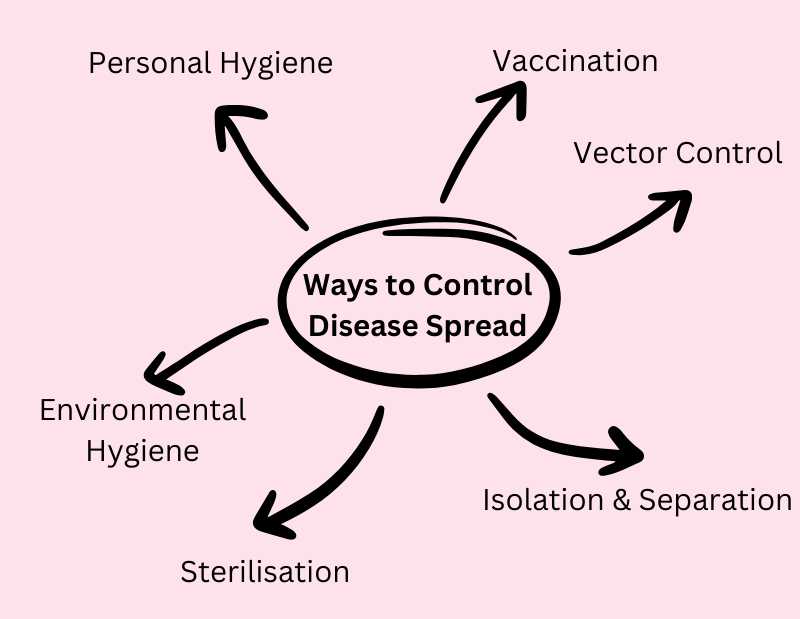Immune System and Disease
The immune system is important to protect your body from harmful pathogens.
If a pathogen succeeds in overcoming the early immune system (nonspecific disorder), the immune system will take to neutralize or eliminate the threat, reducing the risk of infection.
White blood cells are an important player in the immune system. They can be divided into two main types: lymphocytes and phagocytes.
Both play an important role in immune defence.
The immune system and its role in disease
The immune system is supposed to protect the body, but accidentally attacking the cells in the body can lead to illness.
The main example is Type 1diabetes, where the immune system aims to be Insulin-producing cells, leading to reduced insulin
production and impaired blood glucose regulation.
1. What Is immunity
Immunity refers to avoiding body abilities, infections, and illnesses by neutralizing or eliminating harmful pathogens. This includes a complex network of cells, tissues and organs that work together to protect against disease-causing microorganisms.
2. Types of immunity : It is Studied as Follows
Immunity can be divided into two main types.
a)Innate immunity: This is the frontline ofdefence that exists from birth and includes physical barriers & chemical barriers such as skin and stomach acid.
b)Out-immunity: This type occurs over time by the body’s response to pathogen or vaccination.
Types of immunity also defined differently as
a)Active immunity
When the body responds to pathogens and creates its own antibodies, active immunity develops. This immunity occurs after infection or
after vaccination,as both scenarios causeanti-body production.
b)Passive immunity
Passive immunity is a temporarydefence mechanism in which antibodies are stored from another source, instead of being produced by the
body. During pregnancy and breastfeeding,for example,mothers transfer antibodies to infants and provide short term protection until the child’s immunesystemisfully developed.
In contrast to active immunity, passive immunity does not create memory cells. This means it does not provide long-term protection.

3. Pathogens and mobile diseases
Pathogens are disease causing microorganisms. Frequent types of pathogens include bacteria, viruses, fungi and protozoa.
Contagious diseases are diseases that can spread from one person to another through various modes of transmission.
3.1 Examples of pathogens and their diseases:
Examples of pathological types
Bacteria mycobacterium tuberculosis tuberculosis
Virus SARS-COV-2 Covid-19
Mushroom Candida Thrush
Protozoa Malaria
4. The Disease Path
Disease can spread through several transmission paths. Understanding this mode is important for effective control of outbreaks
4.1 Direct Contact
This type of transmission occurs when the pathogen spreads in direct contact with aperson infected with the disease.Undoubtedly, infectious droplets that have been coughed or sneezed will be released, covering short distances. Examples are influenza, tuberculosis, & COVID-19.
4.2 Indirect transmission
Pathogens can move without direct contact also . This can be done by living organisms or material objects in following manner :
A)In the air: Pathogens that remain spread in the air can cover long distances,Examples are measles and tuberculosis.
B)Watertransferable: Contaminated or impure drinking water can lead to diseases such as cholera and typhoid fever.
C)Food transmission: Food from improperly prepared or contaminated foods can lead to infectious diseases, such as food poisoning or salmonella.
D)Vector Transmission: Animals and insects act as carriers. For example, mosquitoes spread malaria, dengue fever and other diseases.
E)FOMITE Transmission: happens through Contaminated surfaces, such as doorknobs, medical devices, mobile phones etc all can lead to infectious diseases.
4.3 Vertical transmissionVertical infection occurs when an infected mother takes a child while pregnant, giving birth or breastfeeding. Examples: HIV & natural syphilis.

Understanding this spread of this disease mode will help implement effective precautionssuch as proper hygiene, hygiene, vaccination, and vector control.
5. Body defence system
The human body has several layers of defensive mechanisms.
A)Physical barriers: Skin, mucus and hair prevent pathogens from entering.
B)Chemical barrier: HCl in stomach acid kills pathogens.
C)Biological immune system: Using bacteria in the intestines prevents harmful bacteria from growing.
D)Phagocytes: Special white blood cells that consume and digest pathogens.

6. Role of Phagocytosis and immunity
Phagocytes are an important component of the immune system. They are white blood cells digest harmful microorganisms by a process known as phagocytosis.
The two main types of phagocytes are:
- Neutrophils: The most common type of leukocyte that responds quickly to infection by eating pathogens.
- Macrophages: Large phagocytes that consume pathogens and dead cells, and simultaneously react with other immune cells.
The phagocytosis process includes:
1. Detection: Phagocytosis uses surface receptors to recognize pathogens.
2. Disease: Pathogens are called vesicles called phagosomes.
3. Digestion: The phagosomes are fused with lysosomes where enzymes dismantle pathogens.
4. Removal: Pathogen ruins are excluded from the cells. It can also be developed as a phagocytosis procedure.
They can also be re elaborated as Steps of Phagocytosis:
– Detection – Phagocytes identify the presence of a pathogen.
– Binding – The phagocyte attaches to the pathogen in a non-specific manner.
– Engulfment – The phagocyte surrounds and internalizes the pathogen, enclosing it within a vesicle called a phagosome.
– Digestion – The phagosome fuses with lysosomes, which release digestive enzymes to break down the pathogen.
– Excretion – The phagocyte expels the digested remnants of the pathogen.
Phagocytes play a vital role in both innate and adaptive immunity by helping to clear infections and stimulating the production of antibodies by other immune cells.

7. Controlling spread of disease
Disease spreading can be controlled by a combination of individual, ecological and medical interventions.
Key strategies include:
7.1 Personal hygiene
a)Regular handwashing with soap reduces the transmission of germs.
b)If you cover your mouth while coughing or sneezing, it will prevent airborne infection.
c)Proper food handling and storage reduces the risk of food disease.
7.2 Vaccination
Vaccination programs provide immunity against a variety of infectious diseases.
a)Booster shots help you maintain long-term protection.
b)Mass immunity reduces the prevalence of fatal diseases.
7.3 Isolation and separation
a)Looking for and Isolating infected people will prevent spread of infectious diseases.
b)Special Wards in Hospital isolation reduces the risk of infection.
c)Travel restrictions during the pandemic limits the movement of infection.
7.4 Environmental hygiene facilities
a)Proper waste disposal reduces breeding ground for disease vectors.
b)Clean drinking water and sanitation facilities prevent water-related illnesses.
c)Regular disinfection of public spaces reduces the risk of infection.
7.5 Sterilization and disinfection
a)The use of disinfectants on frequently touched surfaces kills pathogens.
b)Sterilization is done to prevent medical devices from being infected in hospitals.
c)Proper hygiene in the area of food preparation reduces disinfection
7.6 Vector Control
a)Removal of stagnant water prevents mosquito breeding.
b))The use of insecticides and bed nets reduces diseases transmitted by mosquitoes.
c)Rats-population control minimizes the spread of diseases.
7.7 Public Health Education
a)Sensitization campaigns notify people about measures to prevent infections & Illnesses.
b)The role of government initiatives are to promote community hygiene and vaccination.
c)Schools and employment have implemented health programs to ensure a safer environment.
By implementing these measures, spreading diseases can be significantly checked, which reduces the impact of infectious outbreaks
on society.

8. Immune response
When pathogens penetrate the body, the immune system activates the infection and fightsback. This includes a variety of components such as white blood cells (WBC), antibodies, and lymphocytes.
9. Lymphocyte response to pathogens
Lymphocytes are a type of WBC that plays an important role in immunity.
This includes:
B lymphocytes (B cells): Produces antibodies to neutralize pathogens. And
T lymphocytes (T cells): Destroy infected cells and regulate immune responses.
9.1 Antibody antigen interaction
Antibodies bind to specific antigens to neutralize pathogens. The interaction is performed as follows:
1. Detection: Recognizes antibodies and binds to antigens.
2. Neutralization: Antigens are blocked from infected host cells.
3. Aggregation: Smellish pathogens alleviate them from removing them.
4. Phagocytosis: Immune cells eat away at antigen-antibody complexes and digest.
10. Covid-19: Case Study
Covid-19 is a respiratory disease caused by the SARS-COV2 virus. It spreads through drops of air, contaminated surfaces, and close contact with infected people.
Symptoms include fever, cough, shortness of breath, and loss of taste and odor.
Precautions include:
Wearing a mask: Reduces drip in the airways. Social Distance: Avoiding overcrowded areas minimizes risk.
Hand-hygiene: Frequent hand washing with soap eliminates viruses.
• Vaccination: A mass vaccination program will help you build Herd- Immunity •Lockdown and Travel Restrictions: Controlled movements to limit spreads.
Public Awareness campaign:Educate people about symptoms and precautions.To prevent infectious diseases, it is important to understand the immunity and disease movement.
Proper hygiene, vaccination, and health measures play an important role in controlling spread of disease and maintaining general health.
FAQs
How does the immune system recognize harmful substances?
Special immune cells such as T cells and B cells identify harmful substances by proof ofspecific antigens (foreign substances). When recognized, the immune system begins a response and produces antibodies to neutralize the invader. Furthermore, the immune system has a memory function that allows for faster and more powerful responses to future encounters with the same antigen.
What is the immune system?
The immune system is a complex network of cells,tissues and organs that work together to protect the body from harmful substances such as bacteria, viruses, and toxins. It can recognize and neutralize threats, while also reminding of previous encounters to achieve faster responses with future exposures.
What is phagocytosis? How does your immune system support you?
Phagocytosis is a process by immune cells that describe and destroy harmful substancessuch as phagocytes, bacteria and viruses.This mechanism is important to prevent spread of infectious diseases and to maintain general health.
How does phagocytosis work?
When a phagocyte encounters a harmful substance, it eats it into vesicles called phagosomes. The phagosomes then dissolve in lysosomes containing enzymes that dismantles pathogens. This process neutralizes the threat and prevents the body.
What are the main types of phagocytes?
The two major phagocytes involved in phagocytosis are:
a) Neutrophils – The most common type of phagocyte involved in the attack of bacteria and mushrooms.
b)Macrophages – These phagocytes help identify and eliminate foreign bodies and also play a role in removing dead or damaged cells.
How Does Temp Impact Growth of Pathogens?

Write a Short Note on Cholera.
Cholera: Transmission and Avoidance
Cholera is a severe bacterial infection caused by Vibrio cholerae, primarily affecting the intestines. Consuming tainted food or water is how it spreads, especially in places with inadequate clean water supplies and poor sanitation. Outbreaks of cholera are frequent in areas with high population density, refugee camps, and areas with poor access to sanitary facilities.
The illness causes severe diarrhea, dehydration, and can be lethal in a matter of hours if treatment is not received. Treatment with oral rehydration salts (ORS) or intravenous fluids is essential due to the rapid loss of bodily fluids.
Improving water quality, maintaining adequate sanitation, and encouraging hygienic habits like soap washing are all part of cholera prevention. Drinking water that has been boiled or treated and eating food that has been cooked thoroughly can lower risks. Furthermore, cholera vaccinations offer protection . Public health initiatives focusing on clean water supply and sanitation infrastructure are vital in controlling and preventing cholera outbreaks.
